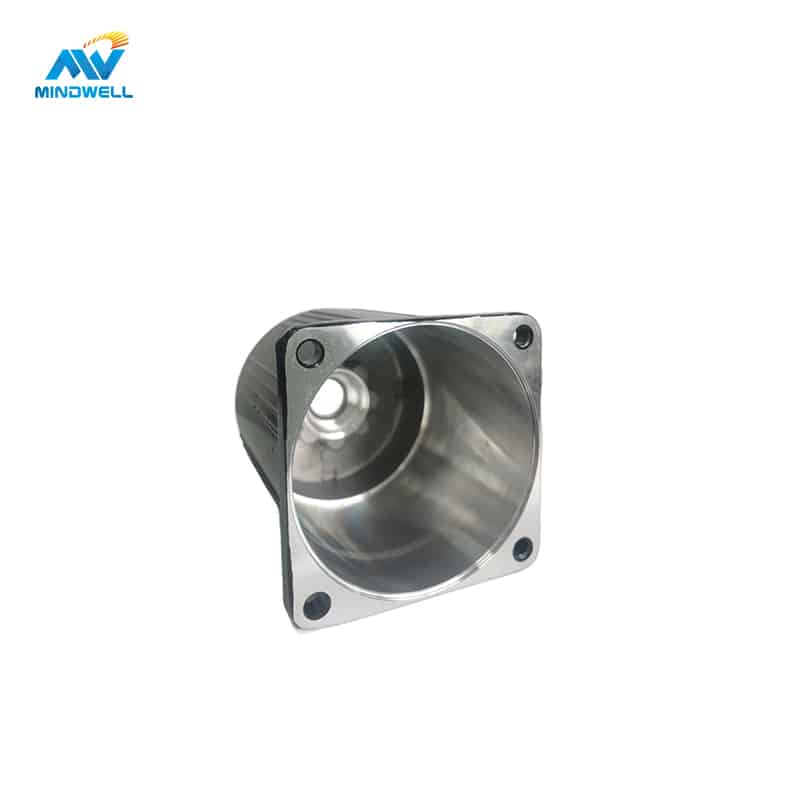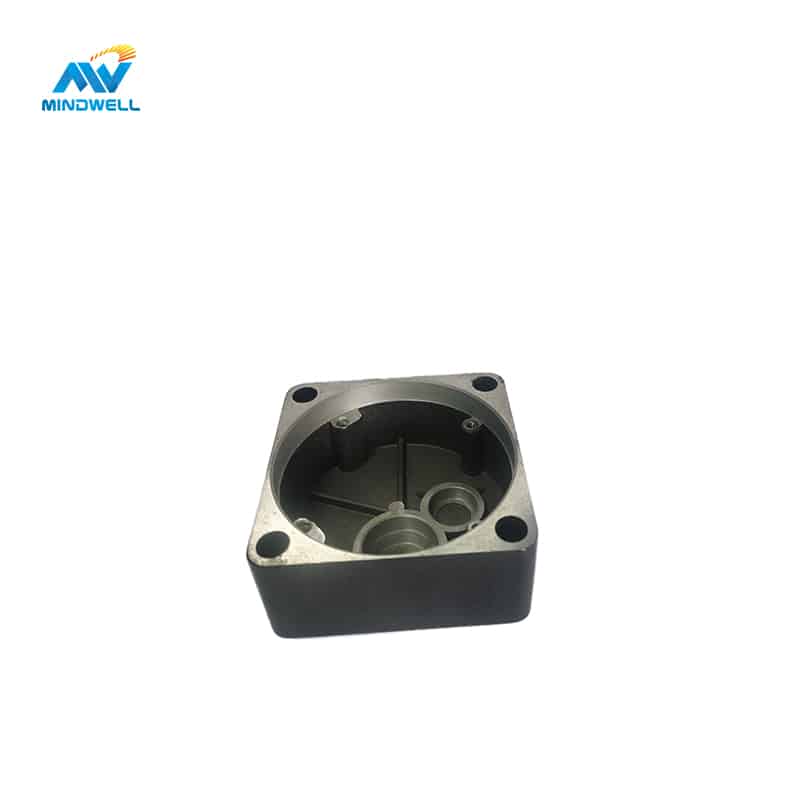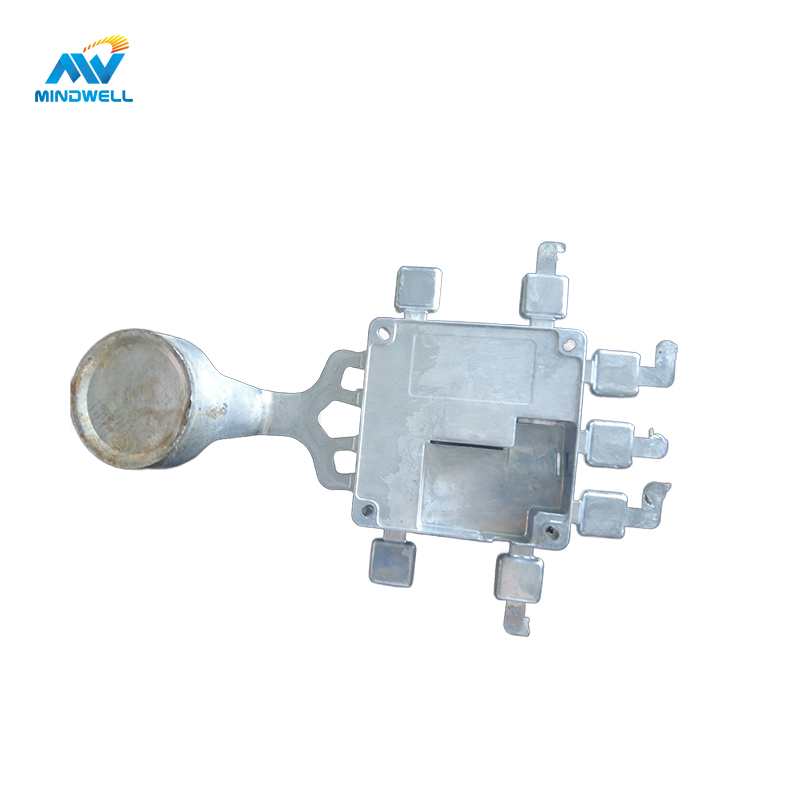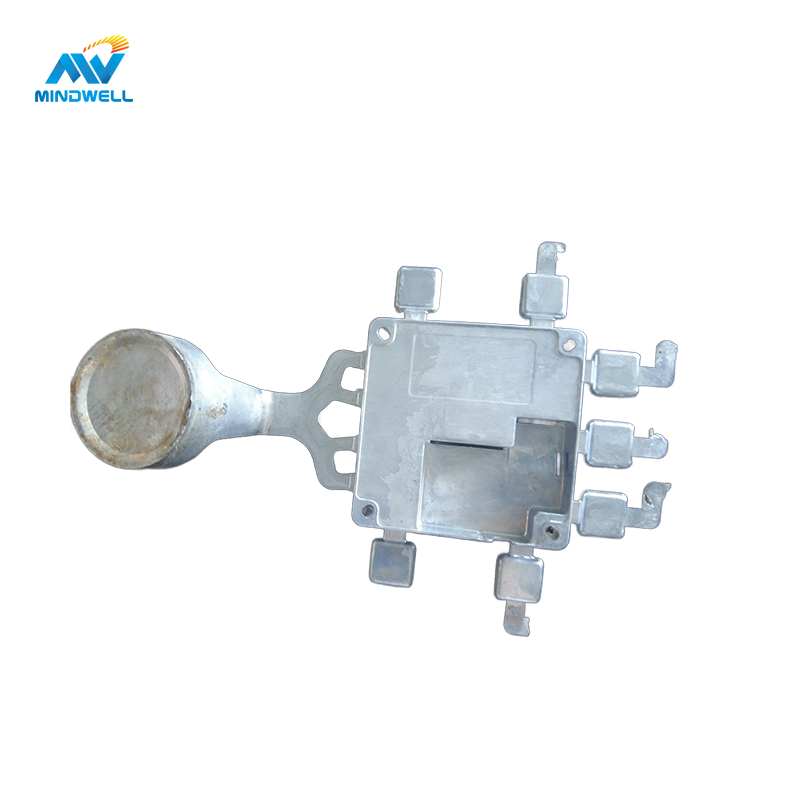L'alluminio è una lega? Sì, è la risposta più immediata. Raramente l'alluminio puro, un metallo leggero e resistente alla corrosione, viene utilizzato in ambito industriale. Piuttosto, viene mescolato con altri elementi per formare leghe di alluminio, ognuna delle quali ha caratteristiche uniche adatte a un determinato uso. Questo articolo si addentra nel vasto mondo delle leghe di alluminio, esaminandone le numerose varietà, i gradi, le caratteristiche e gli usi.

Comprendere le leghe di alluminio
Una lega è di alluminio?
Infatti. Poiché l'alluminio puro manca di resistenza ed è morbido, viene raramente impiegato nelle applicazioni industriali. Rame, zinco, magnesio e silicio sono tra gli elementi che vengono legati all'alluminio per migliorarne le qualità meccaniche e fisiche.
Vari tipi di leghe di alluminio:
Gli ingredienti di lega e gli usi previsti per le leghe di alluminio ne determinano la classificazione. Ecco alcuni tipi tipici:
Serie 2xxx:
Esempio: 2024
Conosciuto per la sua grande resistenza e tolleranza alla fatica, viene spesso utilizzato nelle applicazioni aeronautiche.
Serie 3xxx:
Esempio: 3003
Utilizzato spesso nelle applicazioni architettoniche e nelle attrezzature culinarie, è noto per la sua eccezionale formabilità e resistenza alla corrosione.
Serie 5xxx:
Esempio: 5052
L'elevata resistenza alla corrosione lo rende adatto alle applicazioni automobilistiche e marine.
Serie 6xxx:
Esempio: 6061
Molto apprezzato per la sua forza, la resistenza alla corrosione e la saldabilità, viene spesso utilizzato nelle parti strutturali.
Serie 7xxx:
Esempio: 7075
Conosciuto per la sua straordinaria resistenza, viene spesso utilizzato in applicazioni aerospaziali e ad alte sollecitazioni.
Serie 8xxx:
Esempio: 8011
è utilizzato soprattutto per l'imballaggio e le applicazioni domestiche, grazie alla sua formabilità e resistenza alla corrosione.
Gradi e caratteristiche dell'alluminio
Proprietà della lega di alluminio:
A seconda della loro composizione, le leghe di alluminio presentano un'ampia gamma di qualità. Le caratteristiche tipiche sono le seguenti:
- elevato rapporto resistenza/peso
- Resistenza alla corrosione
- eccezionale conducibilità elettrica e termica
- Lavorabilità e formabilità
Alluminio vs. lega di alluminio:
Le leghe di alluminio sono combinazioni di alluminio con altri elementi, ma l'alluminio è un elemento a sé stante. Le qualità specifiche delle leghe di alluminio sono migliorate dall'inclusione di elementi di lega, aumentando la loro adattabilità a una più ampia gamma di applicazioni.
Alluminio Classificazione:
I due tipi principali di leghe di alluminio sono le leghe battute, che si formano con metodi meccanici, e le leghe fuse, che vengono modellate.
Come muoversi nel mondo delle leghe di alluminio
Grafico delle serie di alluminio:
L'Aluminium Association ha stabilito uno schema di codifica delle leghe di alluminio composto da quattro cifre. L'ingrediente principale della lega è indicato dal primo numero, che serve anche come riferimento rapido per le proprietà della lega.
Qual è il numero di tipi di alluminio?
Esiste un'ampia gamma di leghe di alluminio e ogni tipo è realizzato per soddisfare determinate esigenze. Un'ampia gamma di settori dimostra la versatilità delle leghe di alluminio, dall'ingegneria aerospaziale ai comuni prodotti per la casa.
Gradi di alluminio fuso:
Le leghe di alluminio fuso sono utilizzate in situazioni in cui sono necessarie forme precise. Le parti automobilistiche, gli elementi ornamentali e i componenti dei motori sono alcuni esempi significativi.
Confronto tra leghe di alluminio:
La scelta della lega di alluminio ideale richiede di tenere conto della formabilità, della forza e della resistenza alla corrosione. La lega migliore per una particolare applicazione può essere scelta con l'aiuto di un confronto approfondito.

In sintesi
In sintesi, il campo delle leghe di alluminio è ampio e attivo e offre a ingegneri e produttori una pletora di scelte. La scelta del materiale appropriato per soddisfare determinati requisiti richiede una comprensione dei tipi, dei gradi e delle qualità delle leghe di alluminio. Le leghe di alluminio continuano a cambiare ed elevare i settori, mostrando la flessibilità e l'adattabilità di questo straordinario metallo in tutto, dalle meraviglie aeronautiche alle cose di tutti i giorni.
FAQ
1. Quanti tipi di leghe di alluminio esistono?
Esistono molti tipi diversi di leghe di alluminio e, man mano che scienziati e ingegneri creano nuove combinazioni per soddisfare esigenze particolari, la gamma di leghe continua a crescere. Sulla base dei costituenti primari di ciascuna lega di alluminio, l'Aluminium Association, un'associazione industriale statunitense, ha classificato le leghe di alluminio in serie. Di seguito un rapido riepilogo di alcune serie e tipologie tipiche:
1xxx Series:
99% or more pure aluminium is the alloying element.
For instance, 1100
Qualities: Outstanding conductivity, high resistance to corrosion, and great formability.
Serie 2xxx:
Cu (alloying element)
Examples include 2014 and 2024.
Properties: Used in aerospace applications, high strength, great fatigue resistance.
Serie 3xxx:
Compound for Alloying: Manganese
3003, 3105, as examples
Properties: Widely used for various applications, good formability, moderate strength.
The 4xxx Series:
Silicon is an alloying element.
For instance, 4043
Properties: Used for brazing and welding, it has good fluidity when melted.
The 5xxx Series:
Elemental Alloying: Magnesium
Instances: 5052, 5083.
Features: Superior resistance to corrosion, increased tensile strength, often used in maritime settings.
Serie 6xxx:
Silicon and Magnesium are Alloying Elements
Instances: 6061, 6063.
Properties: Often used in structural applications, this material has a good blend of strength, formability, and weldability.
Serie 7xxx:
The alloying elements are copper and zinc.
For instance, 7075, 7050
Features: Excellent strength; used in high-stress and aerospace applications.
Serie 8xxx:
additional alloys not included in the preceding series.
For instance, 8011 is a packing code.
Properties: Change depending on the application and particular alloy composition.
Every series has a variety of alloys, and within each alloy, the material’s characteristics may be further influenced by varying tempers or heat treatment settings. Furthermore, speciality alloys with distinct properties are created for particular uses, such as consumer electronics, aerospace materials, and automobile parts.
The categorization makes it simpler for engineers and manufacturers to choose the best material for their intended applications by offering a methodical approach to comprehend and classify aluminium alloys.
2. What are the 4 types of alloys?
Metallic materials known as alloys are created by mixing two or more elements, at least one of which must be a metal. Alloys come in a variety of forms, however they may be generally divided into four categories:
Alternative Alloys:
Atoms of one element are swapped out for atoms of the main metal in substitutional alloys. For this replacement to happen without causing a large amount of crystal lattice deformation, the atoms involved should be comparable in size and characteristics. Bronze (copper-tin alloy) and brass (copper-zinc alloy) are two common examples.
Alloys Interstitial:
Smaller atoms of a different element fit into the gaps (interstices) between the atoms of the main metal in interstitial alloys. This often happens when there are significant differences in the atoms’ sizes. Steel is one example, where carbon atoms are able to fit into the voids left by the crystal lattice of iron.
Alloys with Interstitial Substitution:
These alloys are a combination of interstitial and substitutional alloys. Smaller atoms of a third element occupy the spaces left by the replacement of some of the main metal’s atoms with those of another element. For example, stainless steel is an interstitial substitutional alloy in which smaller carbon atoms occupy interstitial gaps and chromium atoms replace certain iron atoms.
Alloys Composite:
Dispersion-hardened alloys, another name for composite alloys, are made of metal matrices with scattered particles of another material. These scattered particles may consist of a non-metallic substance or another metal. These particles reinforce the alloy when they are present. Aluminium reinforced with ceramic particles is one example.
These groups provide a broad foundation for comprehending the many combinations of elements that might result in alloys. An alloy’s particular characteristics and uses are determined by the elements, their ratios, and the production techniques used. Because they provide materials with a mix of qualities that often outperform those of individual elements, alloys are essential to many different sectors.
3. What are the 3 types of aluminum forms?
Aluminium is a multipurpose metal that is often used in a variety of ways to satisfy the distinct requirements of various industries. The following are the three main forms of aluminium:
Aluminium Plates and Sheets:
Aluminium sheets and plates are thin, flat pieces of aluminium available in different thicknesses and sizes. Applications for them include general manufacturing, automotive, aerospace, and construction.
Applications: Automobile panels, aviation components, building facades, and a variety of structural and aesthetic uses are among the uses for aluminium sheets and plates.
Extrusions of aluminium:
In order to manufacture precise forms with a constant cross-sectional profile, hot aluminium is forced through a die to make aluminium extrusions. These extrusions may be made into tubes, bars, angles, channels, and personalised profiles.
Applications: Extruded aluminium finds extensive usage in electronics, building, transportation, and architecture. Window frames, door frames, curtain walls, and structural components are examples of common uses.
Aluminium Foil:
Generally less than 0.2 mm thick, aluminium foil is a thin, flexible sheet of aluminium. It is created by rolling aluminium ingots into thin sheets, and its superior flexibility, conductivity, and barrier qualities are well-known.
Applications: There are many uses for aluminium foil in cooking, electronics, insulation, and packaging. It is often used as a heat exchanger in electrical equipment, food packaging, household foil, and insulating material.
The three aforementioned types signify the principal methods by which aluminium is refined and used throughout diverse sectors. The choice of form relies on the needs of the application, since each form has unique benefits depending on its characteristics. Aluminium is still a preferred material in many different sectors because of its lightweight, resistance to corrosion, and versatility.
4. What are the two main alloys of aluminium?
The two primary aluminium alloys are:
The 6061 Aluminium Alloy:
Composition: Mainly made of aluminium, with trace quantities of silicon, magnesium, and copper and chromium added.
Properties: Weldability, strength, and resistance to corrosion are among 6061’s best qualities. It has excellent machinability and is often used in structural settings. It is simple to forge, weld, and extrude.
Applications: Frequently used in the building of bicycle frames, automobile parts, aviation structures, and structural elements for a variety of industries.
The 7075 Aluminium Alloy:
Main component: aluminium; minor quantities of zinc, copper, and other metals are also present.
Properties: The high strength, superior resistance to stress-corrosion cracking, and exceptional machinability of 7075 are well known. Although it is not as corrosion resistant as 6061, it is nonetheless often used in situations where strength is of the utmost importance.
Applications: Often used in aerospace applications, such as high-stress parts, missile components, and aircraft structures. It’s also used in certain car parts and high-performance bicycle frames.
These alloys are just a tiny portion of the large variety of aluminium alloys that are available; each is specially designed for a certain use due to its own set of qualities. The final product’s intended purpose, formability, corrosion resistance, and strength requirements all play a role in the alloy selection process.
5. What is the common type of Aluminium alloy?
Aluminium Alloy 6061 is a popular and extensively used variety of aluminium alloys.
The 6061 Aluminium Alloy:
Composition: Mainly made of aluminium, with small amounts of silicon and magnesium. There could also be trace levels of chromium, copper, and other metals.
Qualities:
- Strength: Comparable to structural steel, 6061 is renowned for having exceptional strength.
- Good corrosion resistance is provided by it, however not as much as by some other aluminium alloys.
- Weldability: Good weldability makes it appropriate for a range of manufacturing techniques.
- Machinability: 6061 can be easily machined, which makes it possible to create complex pieces.
Uses:
- Frames, supports, and beams are examples of structural components that are often used in building.
- Aerospace: Because of its strength-to-weight ratio, it is used in aircraft constructions.
- Automotive: Wheels and suspension systems are examples of parts and components used in automobiles.
- Consumer products: Used in the manufacture of sports equipment and bicycle frames, among other consumer products.
- General Fabrication: Often used in general fabrication where a harmony between machinability, weldability, and strength is needed.
Thanks to its well-balanced mix of characteristics and adaptability, Aluminium Alloy 6061 is highly valued in a wide range of sectors. It is often used in applications that call for a lightweight, strong, and corrosion-resistant material. However, individual needs may influence the choice of the “common” kind of aluminium alloy, and other alloys such as 5052, 5083, and 7075 are also often employed in various applications. An alloy’s appropriateness is determined by a number of variables, including the intended purpose, the surrounding environment, and the production methods.






